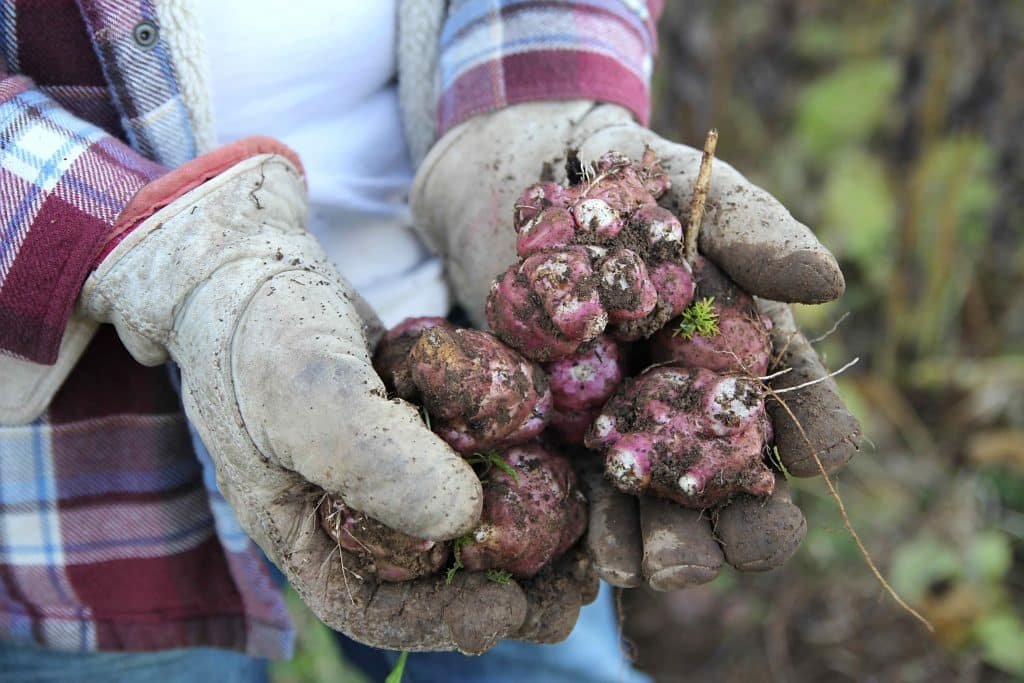
Sunflowers are better known for their delicious seeds and cooking oil but they offer so much more! Did you know that you can eat the entire sunflower: stalk, leaves, petals & seeds? They are nutritious too. Nutrients vary by plant part but overall they are a good source of Vitamin E, Copper, B1 & protein. You can find a complete list of nutrients here.
Before you get started
You don't want to eat sunflowers that have been exposed to any sort of chemical treatment. Make sure they have been grown organically. Sunflowers along with hemp are known as hyperaccumalative plants. They draw pollutants up from the ground into their roots, stems and leaves and store them there.
How to Eat Your Sunflowers
Here is a breakdown of the different parts of the sunflower and their culinary uses.

Leaves
The leaves can be treated like any green, chopped in salads or steamed. Remove the tough centre rib as you would with kale or chard. Sauté with a little butter, lemon juice salt and pepper and you've got a lovely dish of steamed greens. You can also dehydrate them to make chips.
Petals
The petals make an attractive and nutritious addition to salads. and can be used in herbal teas. The flavour is a bit overpowering and bitter in large quantities so use them in moderation.
Stalks
You can chop and peel the stalk and eat it like you would celery. I personally find the texture to be "spongy and strange" but the flavour is palatable, especially when dipped in something like hummus. The stalks are best eaten when the plant is young.
Seeds
Roasted seeds make a great snack. you can also make peanut butter, flour and nut milk from sunflower seeds.
Shells (Hulls)
Did you know that you can make a coffee substitute with the sunflower seed hulls? I can't wait to try this. I found the recipe here.
Buds/hearts
The tender buds (before the flower opens up can be braised and cooked. If you are familiar with cooking fiddle heads or dandelions, its a similar idea. To prepare them, trim the petals and pick off the bitter green around the bottom of the bud/stem area. You can steam or braise them and toss in butter,garlic and lemon.
Sprouts
When thinning out your plants or with intentional planting you can harvest and eat the tender sprouts. They are packed with nutrients and very tasty alone as a snack or in a salad.
Jererusalem artichokes

The Jerusalem artichoke also called sunroot is a species of sunflower cultivated for the tuber, rather than for the seeds, and is treated as a root vegetable. You can read more about growing and using Jerusalem artichokes here.
Medicinal
Native Americans use sunflowers for various herbal remedies: flower tea for lung ailments and leaf tea for high fevers. The seeds are used as a diuretic & expectorant and the roots as an arthritis treatment. Some of this (the roots specifically) are advanced herbalism and not something you should try without a good understanding of what you are doing.
Adapting our Food Palate
When it comes to consuming wilder foods like sunflowers, it can take some getting used to. Many of us have become accustomed to the blander hybrid foods sold in supermarkets. There are countless wild greens growing around us that at one time were commonly consumed. It just takes some effort to adapt our pallets to these wilder flavours. It's well worth the effort!
More on Sunflowers
I have also written about the benefits of growing sunflowers in your vegetable garden. If you'd like to read it you can find it on our website here.
Sources
Edible Wild Plants: Common Sunflower (Helianthus Annuus)
11 Healthy Coffee Alternatives (that you may find in your own yard)
All images are property of @walkerland & walkerland.ca

